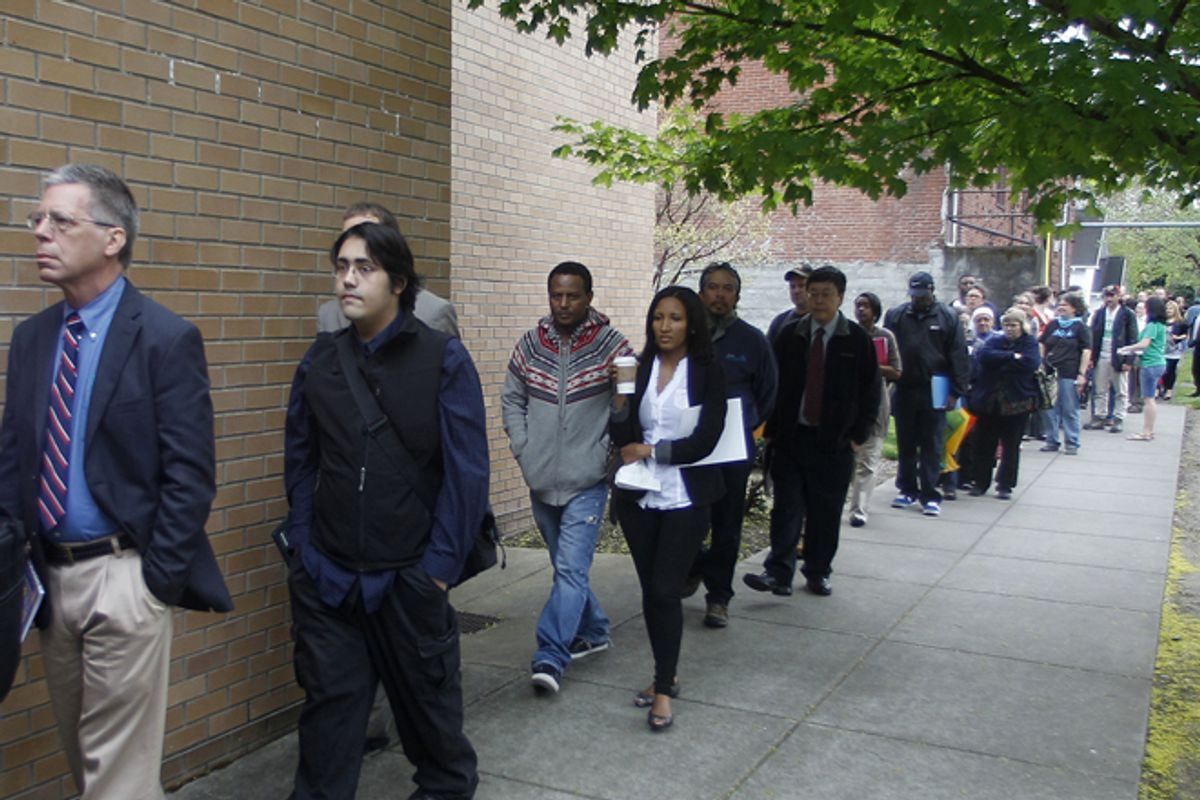Payrolls expanded by 236,000 last month and the jobless rate ticked down to 7.7%, its lowest rate since late 2008, outperforming analysts expectations. Hours worked per week increased and hourly pay rose as well, suggesting a potential improvement in employer demand (though, as noted, some indicators in the report point the other way—these monthly reports are never an analytical slamdunk).
Whether the better-than-expected results signal a faster underlying trend in job growth, and whether it can withstand the fiscal drag from the sequester, is yet to be seen, a point I return to below.
Since we want to avoid reading too much into any one month in these volatile data, the smart move is to average the last few months of payroll gains to smooth out the noise. Doing so reveals some acceleration in hiring: over the past three months, average monthly gains were 191K; over the prior three months, 182K; and over the three months before that, 135K.
Unemployment is also down from 8.3% a year ago to 7.7% last month, as noted.
I’ll work up the details throughout the day* but for now, let’s think a bit about what this report may be telling us:
–What might be behind this recent acceleration? Even while wages and incomes have been relatively flat for most people, households have improved their balance sheets by deleveraging their debt and, with home prices rising in many places, are building back a bit of wealth. That’s probably helping to boost consumer spending, which has been doing better than expected.
–Construction added 48,000 jobs last month and about 150,000 since September, another sign of the improving housing market.
–Combining the improvement in hours per week with the growth in jobs, aggregate hours worked in the private sector were up 0.5%, versus a decline last month. Again, we’ll have to see if this sticks but if so, it will contribute to faster GDP growth this quarter—more on that in a sec.
–There were some notably less favorable indicators in the report: though the number of the unemployed fell by 300,000, the share long-term unemployment (jobless for at least six months) ticked up from about 38% to about 40%. This is indicative of a worrisome situation, where one group of workers churns in and out of joblessness while another large group remains stuck there.
–One reason the unemployment rate ticked down was because 130,000 people left the labor force and the participation rate ticked down (explaining roughly one of the two-tenths decline in the jobless rate from 7.9% to 7.7%). That’s not consistent with an “improving labor demand” story.
–Broadly measured unemployment, including part-timers who’d rather be full-timers and discouraged workers who’ve given up looking for work (and are thus not counted in the unemployment rate) is still very highly elevated at 14.3%. Still, that’s down from 15% a year ago.
–Finally, as I wrote yesterday, it’s too soon for the sequester to be seen in these numbers. My take on that is as follows:
The question is not whether the sequester will hurt—it’s likely to reduce growth by about half-a-percent and kill a bunch of jobs too. The question is “off of what base?” If the economy can strengthen such that it’s growing 2.5-3% this year then 0.5% slower growth still means at least slowly declining unemployment. But if underlying GDP growth is 1.5%-2%, the impact of the sequester could be such that we’ll longingly look back on reports like today’s.
*For e.g., there’s been a somewhat anomalous up-and-down cycle with payrolls since they started growing in early 2010, with faster job growth at the beginning and end of years and weaker job growth in the middle. Not sure what to make of that but it’s worth looking into.

Shares